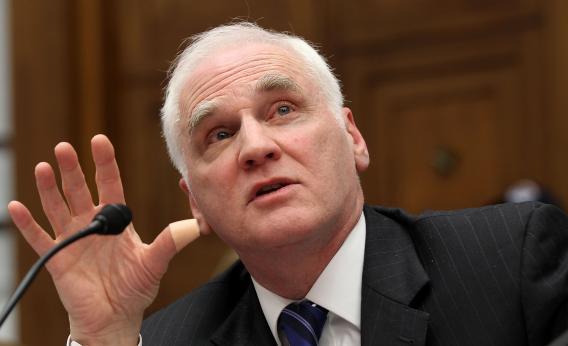The push to overhaul the U.S. banking sector is getting a second wind. Two years after the 848-page Dodd-Frank financial reform act thudded onto desks across Wall Street, regulators, politicians and even banking grandees are back out on the stump talking up ideas that were left on the cutting-room floor. Fresh on the heels of the hoopla to break up banks, the Federal Reserve’s top cop is advocating capping their size. It’s increasingly evident that too big to fail remains too big a concern.
Daniel Tarullo’s push for smaller banks is a telling sign of just how weak the landmark legislation’s foundations have become. The man responsible for overseeing financial stress tests and the central bank’s point person on regulatory matters embraced on Wednesday an old idea to shrink giant banks by limiting their non-deposit liabilities to a certain percentage of U.S. GDP. It’s a simple yet blunt safeguard that would allow lenders to grow with the economy without endangering themselves or the rest of the financial system by becoming too large.
The Fed governor didn’t specify a figure, but that could be because the 2 percent put forward in a proposal by two Democratic senators two years ago would almost certainly reinvigorate the bank lobby’s battle against reform that helped create Dodd-Frank in the first place. JPMorgan and Bank of America would have the most to lose since their liabilities excluding deposits are three times higher than the suggested threshold. Of the biggest U.S. banks, only Wells Fargo would be on the safe side of the measure.
Given that reality, Tarullo, an appointee of President Barack Obama, sensibly left open the door for further discussion. Bankers and rule-makers are weary of thrashing out implementation of Dodd-Frank, so they’ll be understandably resistant to restarting a debate on new ways to restructure the industry. But the revival of ideas like separating banking activities and implementing a strict size limit suggests that despite provisions like living wills, there are growing concerns that taxpayers remain on the hook. It might just be that financial reform is being pushed one step back now before it can take two steps forward.
Read more at Reuters Breakingviews.
